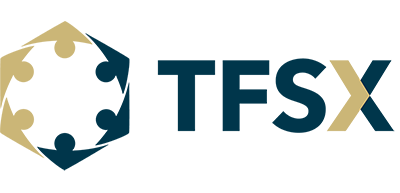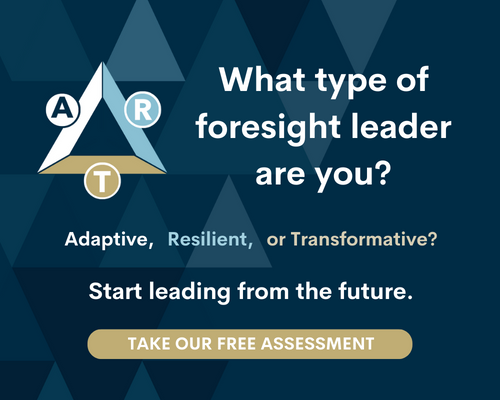Follow Your Futures Compass: How to Identify and Frame Focal Issues
Have you ever tried to drive to a new city without using your phone’s GPS? Do you remember a time when you went on a road trip and had to print out directions from MapQuest, but then you forgot them? It’s quite difficult to arrive at your destination without knowing how to get there, and even more difficult if you’re not sure of where you’re going in the first place.
How do you even begin a journey without knowing where you’re headed?

In foresight, focal issues are like directions that are determined by the leader of an organizational project. Another way to think about them is as research questions that the organization is seeking to answer, that will then help in the development of strategy, innovation, or organizational development. Focal issues not only provide us with the destination, but they show us how to get there.
If you’ve just learned about Strategic Foresight you may be wondering, “Where do I begin? Do I need to create scenarios? Should I develop trend cards?” Focal issues help us to answer these questions, making them a critical starting point in your futures initiatives.
There are no strict rules to creating focal issues as they largely depend on a range of variables. With several factors to consider, TFS has some overarching guidelines that will improve your ability to identify an effective focal issue.
start at the beginning
First, what is a focal issue? A focal issue is the focus of a foresight initiative – it largely depends on the objective of the project, as well as the culture of the community or organization that the initiative aims to impact. Some examples of common focal issues include “The Future of Education”, “The Future of Retail”, or “The Future of AI”.
For the sake of this article, we will leverage TFS’ The Future of Work as an example. This focal issue has been used in all of our Foundations in Natural Foresight® trainings in 2022. This particular framing is useful for a multitude of audiences, making it a good issue to explore.
There are several challenges that our clients and participants have brought to our attention over the years when figuring out how to frame their focal issue.
- The tension between reducing the focal issue to a lens that is too narrow, versus expanding to a perspective that is too broad to grasp or leverage tactically.
- The struggle to identify a focal issue that broadens the long-term perspective of leaders, while also being recognizable enough to capture their attention.
- The dilemma to choose a singular issue that is conceptual and tactical, while also scanning broadly across external forces.
Challenge One: too narrow versus too broad
The Problem of Educated Incapacity
Each of us have topics that present immediate concern to us such as demographic changes, pandemics, climate change, geopolitical affairs, systemic violence and discrimination. However, we also need to identify areas of concern within our organizations and industries. Strategic Foresight helps us in this task by looking at issues from the “outside-in” – examining forces in the larger environment that impact or reframe our immediate areas of influence – rather than viewing the world from the “inside-out” or from the myopic perspective of our organization. In other words, foresight is most effective when we shed our educated incapacity – the idea of being such an expert in your field of concern, that you are the last to recognize changes as they unfold. This is how foresight ensures that we don’t miss emerging disruptions and opportunities.
So how do we land on a focal issue that considers the broader sphere of influence on the macro scale – from the “outside-in” – while also centering on a tactical and strategic goalpost?
The first step is actually not in thinking about topics, like the examples above (i.e. The Future of Education, The Future of Retail, The Future of Work). Initially, you need to determine the objective of the foresight process, the size of your area of influence, and the resources at your disposal. Are you trying to change the culture of the organization? Would your team benefit from considering the future more often? Are your strategic plans lacking in future-empowerment? Should they include more qualitative metrics of success? What is your budget and time commitment? Are you looking to launch a grassroots movement, or help guide an existing one? The answers to these questions will help provide the territory around your “MapQuest” destination.
After answering these questions and thinking through the objectives thoroughly, you should engage the people that the foresight effort aims to impact or involve. We often conduct Genius Interviews or Delphi Studies with key shareholders and stakeholders to help frame the focal issue, and this also acts as a pulse-check for the futures-awareness in an organization. To read more about this, visit our case-study with the Orlando Economic Partnership. You should then discuss the emerging trends and issues that concerns the people you’re attempting to engage. If you’re curious how to begin those conversations, visit our Resource Center for ice-breakers and introductory materials.
If you are leading the charge to the future in your organization, you are likely the most informed about the future-related, interconnected, and complex issues that humanity faces, and the areas of concern for the organization are probably already on your radar. It’s your job to find the sweet-spot of balancing provocation with meeting people where they are. If you’re curious how to do this, contact us. This note is reinforced by another important factor to remember: no foresight effort is ever complete without scanning.
Scanning the Three Environments of Foresight: The Chicken and Egg
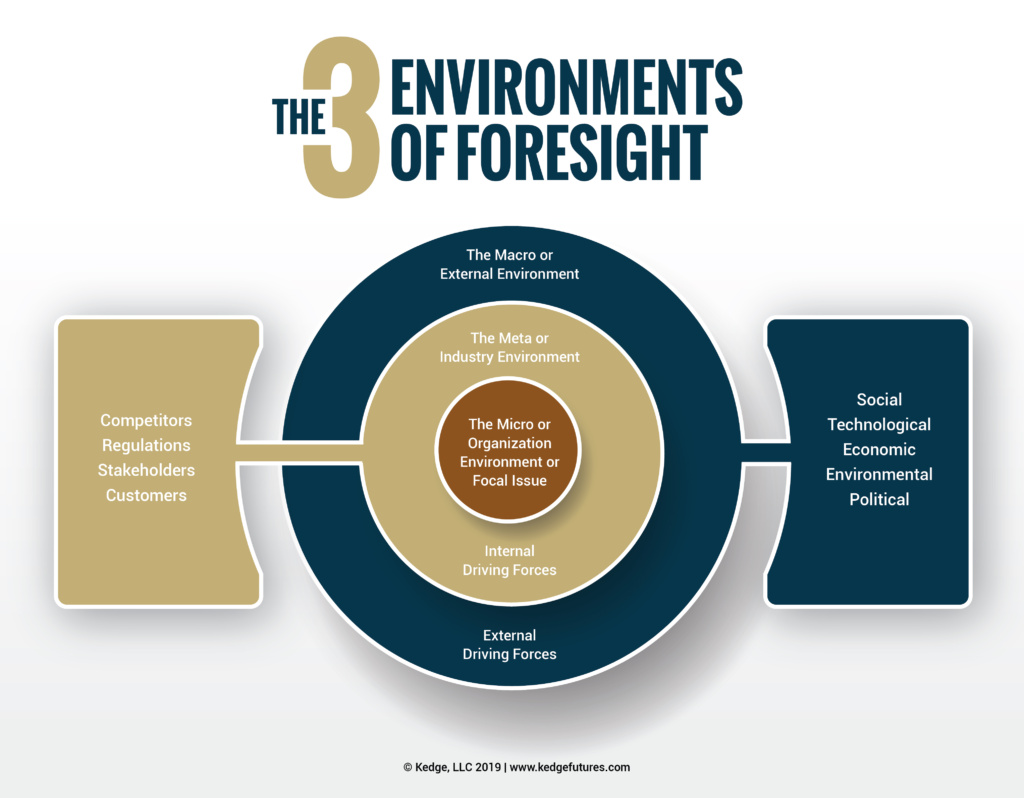
We often refer to what is known as the Three Environments of Foresight: The Macro, the Meta, and the Micro. Most of the time, our organizations, communities, and even we as individuals function from the inside-out. We think about the world in relation to ourselves. Your organization’s quarterly meetings likely discuss your current competitors, regulators, stakeholders, and customers. “What product did Company A just release?” “Entity B is expected to come out with a new policy around X, what should we do about that?” Even global issues like supply-chain management or climate change are often only thought about from the perspective of our own biases.
Scanning rewires our brains and reveals connections we would have otherwise missed. The reason why scanning is so important when finding a focal issue, is that the future is not going to look like today. Our greatest disruptions and most valuable opportunities are outside of our present-day fields of influence. The competitors of tomorrow are not who we compete with today – nor will the economy operate in the same way that it does right now. That’s the thing about a VUCA environment – it’s VUCA.
Of course, we can’t scan everything in the external environment. Humans have a limit to our cognitive ability, and considering every occurrence around the world is impossible. As a result, we find ourselves in a chicken and egg scenario. Our focal issues will reveal what we should be scanning, and our scanning can help us to identify new focal issues.
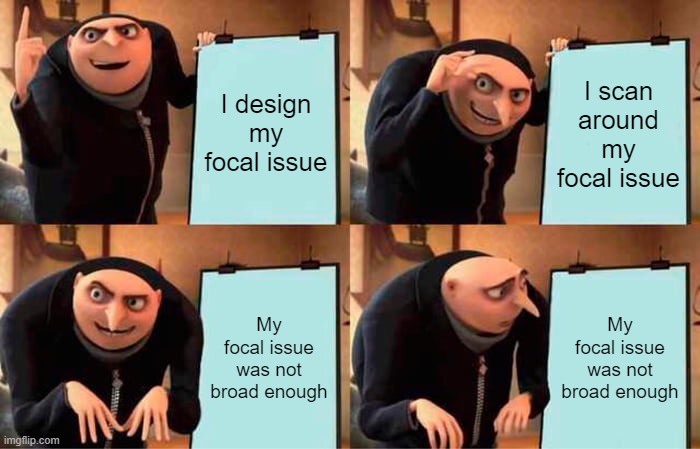
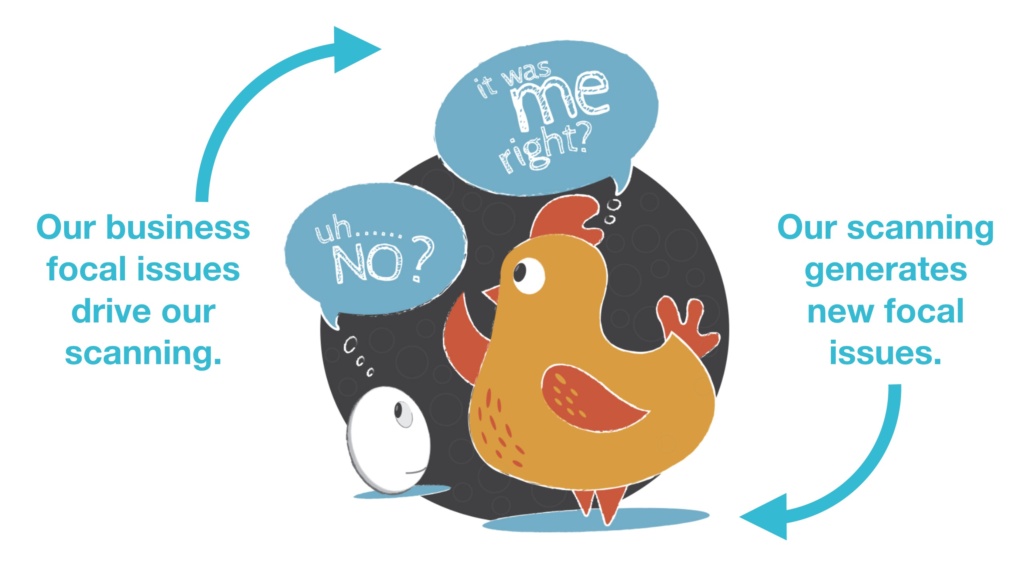
At the end of the day, the leader of the foresight effort knows best what destination we should drive towards – and this is why we say that every foresight professional must have confidence in their craft. The more knowledgeable you are about foresight and the less you depend solely on singular trends (and instead on emerging landscapes of change) the more successful you will be. As easy as it would be to know exactly what the future holds or what the most prosperous focal issue to investigate will be, the truth remains that the future can’t be predicted – only mapped. There are likely a dozen focal issues that would be worth investigating and would provide great results, but what’s important is to emphasize the persistent complexity that will continually shape the way we live, work, and connect.
Challenge two: too near-term versus too far-term
The Push and Pull of the Future
The following sub-section is an excerpt from the Guide to the Natural Foresight® Framework. Access your 100+ page complimentary guide here.
Similar to our explanation around macro versus micro is the tension between provoking the minds of stakeholders to think far beyond today’s concern (normally no more than 5 years), versus meeting people where they are today.
When contemplating the future, we instinctively think of the “top trends” lists that are always making headlines. For most, the word “trend” has become synonymous with the future. This common but erroneous interpretation causes many Strategic Foresight efforts to stall because trends are not the future. Trends are visible because they are occurring today. They represent the present. In fact, trends can be our worst enemy; they tend to keep us connected to what is immediate and surrounding us, but fail to stretch us to see what is changing, what is emerging, and what is possible.
While identifying and interpreting trends is an important part of the Strategic Foresight process, trends themselves represent just one aspect of Strategic Foresight. The future exists across a spectrum, with two distinct ends: the push and the pull of the future. Most organizations focus solely on the push of the future. This end of the spectrum represents the trends and emerging issues that are coming at us, pushing us into the future regardless of our actions. On the other end of the spectrum is the pull of the future. This represents our ability to purposefully identify and create our preferred futures.
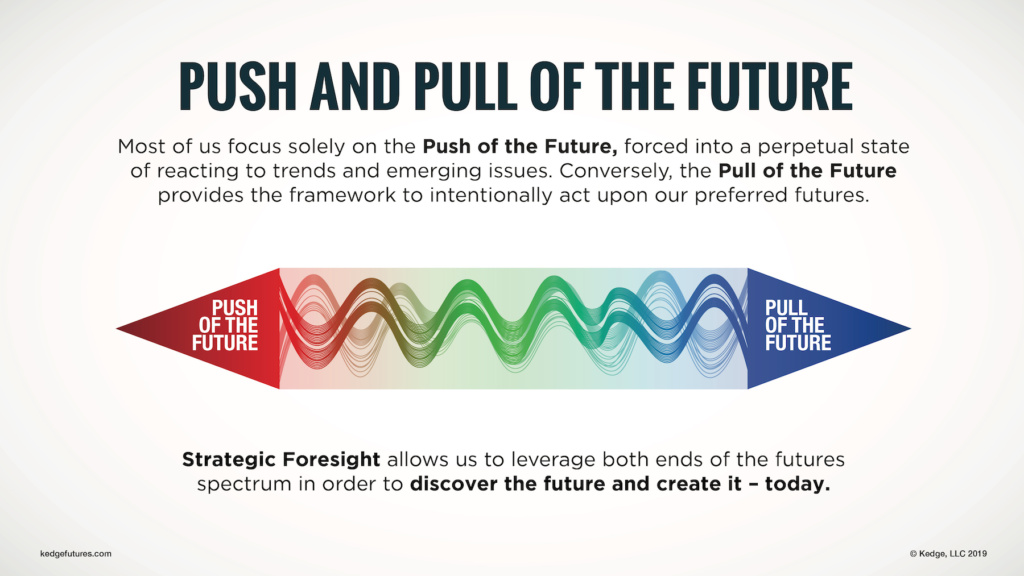
Horizon 1, 2, and 3
Using Strategic Foresight for a focal issue with a short term horizon does not make sense. However, please note that Strategic Foresight and scenarios support a “long now” planning horizon. This means that while futurists work to paint a picture of future worlds, they do so with the ultimate goal of informing decisions today. Imagine splitting the spectrum of the future into three overlapping horizons around your focal issue.
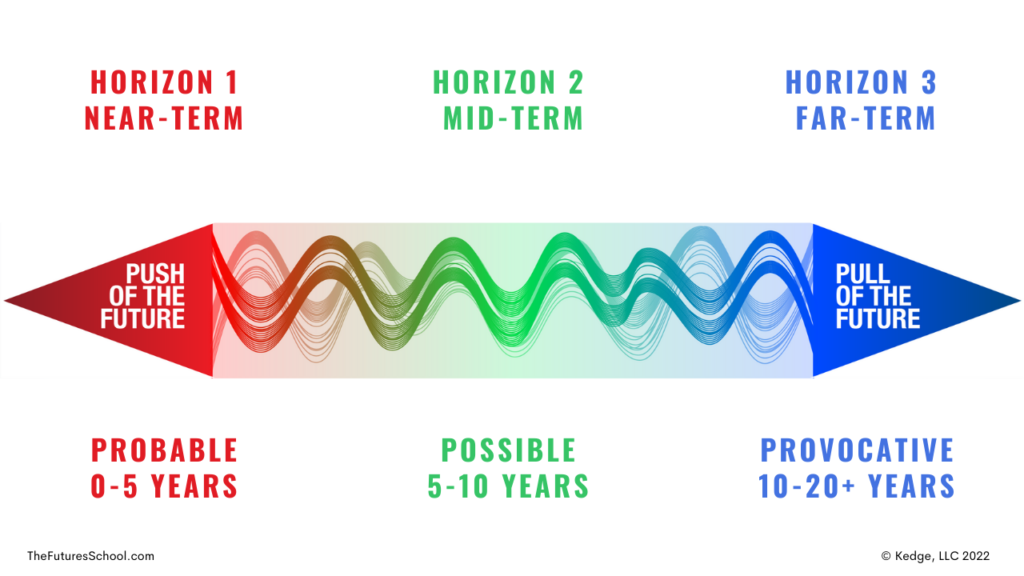
Our focal issues should fall into the H2 sweet spot, or “Possible” futures in our Cone of Possibilities, considering all of the trends, values, and implications that will impact us in the coming years. Take our example of the Future of Work: Horizon 1 could be The Future of the Worker; Horizon 2, Future of Work; Horizon 3, Future of Human Potential. Notice how all three framings support a holistic view of “The Future of Work”. The trends pushing us into the future of work are around the worker: The Great Resignation, the push for human-centric values in the workplace, working remotely, and the transition to a creator economy as more people wish to leverage creativity and entrepreneurship in their careers. This isn’t to say that external issues are not included in this horizon. Rather, we can think about the Future of the Worker as being the closer-in trends, values, and implications that are pushing us into a new era of work. On the other side of the spectrum, the Future of Human Potential, are trends, values, and implications that are redefining us as a humanity. What human rights should be guaranteed and universal? How can we embody multiple identities and purposes? How do we address the Wicked Problems of today through the creation of Wicked Opportunities? On the “Provocative” end of the spectrum are the futures we wish to pull to today. Balancing these two polar ends brings us into the sweet-spot of futures work: Horizon 2, or what is “Possible”.
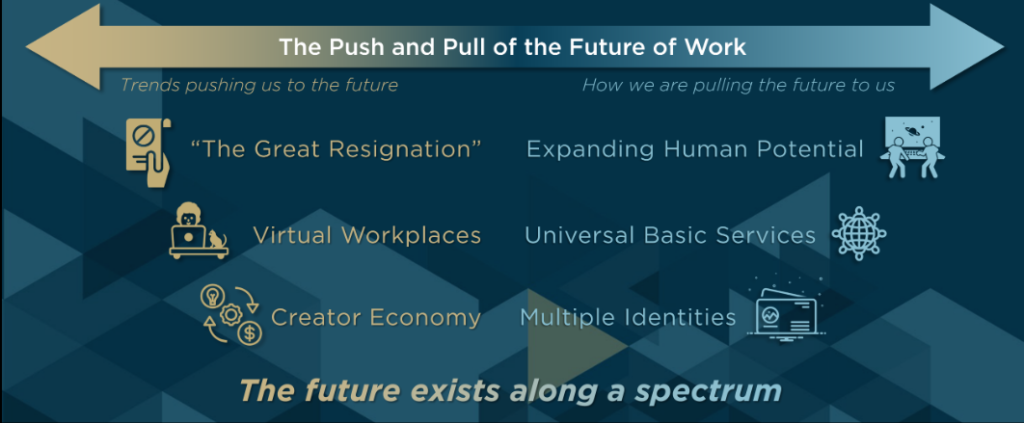
The years listed underneath the spectrum on the above infographic should be taken with a grain of salt- your organization may need to be provoked further than 20 years, or the Horizon 1 may span out only to the next three years. You can’t be exact when it comes to the future- not sure if you’ve caught on to that yet! If you haven’t, here’s another reminder: the future cannot be predicted. It’s impossible to know for certain that the future of work will “begin” in exactly 2028. On the contrary- the future is created in the present. Conducting futures exercises and facilitating diverse conversations on the multiple alternative scenarios is what will build the capacity to be future-empowered in our day-to-day decisions.
challenge three: choosing only one issue
Focal Issue Questions
A focal issue does not have to be limited to a single word. Language is fascinating and extremely powerful. Limiting your scope to one word or phrase could cause the process to fail, simply because the word being used has a specific meaning in today’s context. Let’s examine this idea using the Future of Work again. You’ll notice that on the second page of the document we list over a dozen questions that cover the macro environment. Questions such as:
- Will the metaverse or other platforms serve as platforms for global collaboration?
- How will climate change reorganize sectors and the careers of those entering the workforce?
- How will governmental programs like Social Security change as more people retire early?
These questions help further define what we mean by the focal issue, and what the initiative seeks to investigate. A good framework for designing focal issue questions is STEEP- Social, Technological, Economic, Environmental, and Political- as this covers the breadth of the external environment. There is no limit to how many questions you can ask – the more the better! Focal issue questions are excellent tools to help stakeholders think outside-the-box of their typical purview.
Landscapes of Change and World Building
You may be stuck between three or more focal issues. How do you decide on which one is best? Remember that no matter the focal issue, your foresight process should always consider the wide, interconnected futures landscape. You wouldn’t want to land on the Future of Learning for your focal issue and only ever discuss educational trends. The focal issue is a destination with many routes to get there. If the destination is uncertain, then you must consider the many different forms it could take, as well as the variety of obstacles that lie ahead across the multitude of paths that your organization may take.
Using our example of The Future of Work, this focal issue and its supporting questions are not where the efforts end, but rather where they begin. In our scenario training, we practice the Three Ways of Scanning using the Frameworks for Quality Futures Intelligence to deep-dive into the emerging issues surrounding the Future of Work. We then stand back and discuss the bigger picture- what is emerging in this swath of trends, values, of implications? We call that a pattern- or an emerging landscape of change. Pattens are much more rigorous than singular trends. We then manifest those patterns into the year our scenarios are set (2035) and consider them as a suite. Finally, we split the cohort into teams (for practicality) based on the three Which World archetypes. This entire process ensures that our foresight efforts cover every factor, while building pattern recognition and sense-making skills along the way.
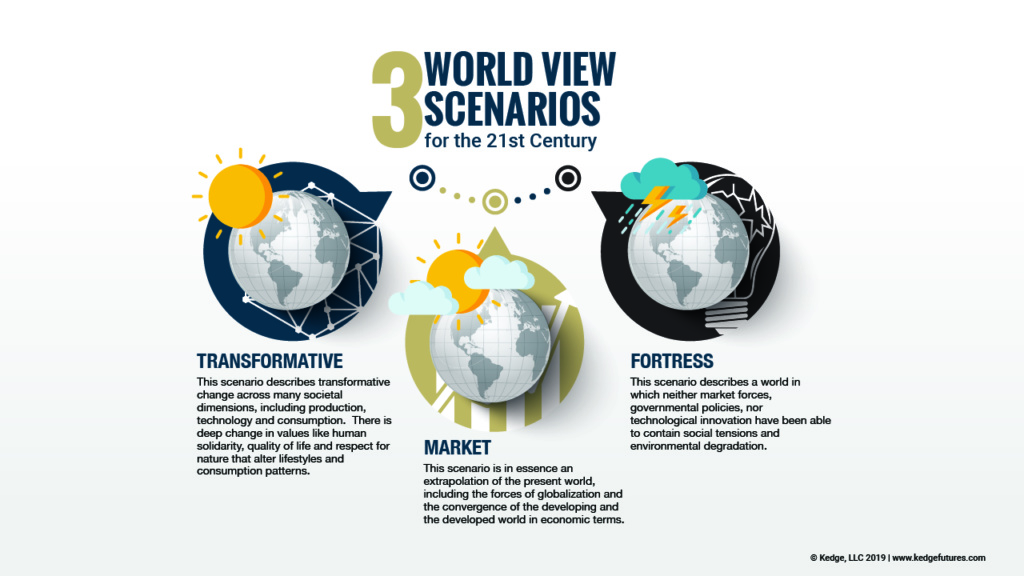
Our scenarios are not exact directions to a particular destination, because the future can’t be predicted! We often use a quote from Alvin Toffler about ancient cartographers to underscore this point.
“In dealing with the future, it is more important to be imaginative and insightful than to be one hundred percent “right.” The maps of the world drawn by medieval cartographers were so hopelessly inaccurate, so filled with factual error, that they elicit condescending smiles today. Yet the great explorers could never have discovered the New World without them.”
Alvin Toffler
The future cannot be predicted, so no matter the focal issue, your foresight efforts should consider multiple perspectives, scales, and contexts to ensure that the strategies they inform are VUCA-empowered. How do we move from Analysis Paralysis to Embracing VUCA? Listen to a season of podcasts discussing that very topic.
conclusion
There are many things to consider in framing a focal issue, so believe us when we say that we know it can be overwhelming. This article was lengthy, and still did not cover every single aspect regarding focal issues.
Don’t fret though! Foresight is challenging, but it’s the most important skill of the 21st century, and you have TFSX to support you.
To learn more about focal issues, listen to our podcast episode, “The Future of Haircare In-Shower”, where we discuss the many factors that go into framing a focal issue.
Thank you for reading, and if you enjoyed this article or would like further support in your futures efforts, please don’t hesitate to reach out to us!

Ashley Bowers
Creative Strategist, TFSX
Ashley leverages her expertise in sustainable design, environmental science, and marketing to support user-experiences with a holistic approach. Her goal is to empower changemakers, organizations, institutions and governments to thrive in a world of exponential uncertainty and complexity.
More on Ashley